Have you ever noticed white crystals on weed plants? If so, you’ve just discovered trichomes.
Trichomes not only play a crucial role in the survival of a cannabis plant, but they also serve as the very factories responsible for producing the wide array of cannabinoids, terpenes, and flavonoids that give our favorite cannabis strains their potency, uniqueness, and effectiveness.
In this blog post, we will take a deep dive into the fascinating world of trichomes, exploring their significance, their impact on the quality of cannabis, and why those shimmering ‘crystals’ on your cannabis buds are a big deal. Let’s get started!
What Are Trichomes?
Trichomes are those tiny little crystals that pop up on the surface of mature cannabis plants. Though they may seem unassuming, they have a super important job in the marijuana plant’s survival and growth.
There are three main types of trichomes: bulbous, capitate-sessile, and capitate-stalked. Each type has its own unique structure and size.
Trichomes are like the plant’s bodyguards, protecting it from stress and pesky predators. But that’s not all – they are also the ones responsible for producing cannabinoids like THC and CBD, which give the plant its mind-altering and medicinal properties.
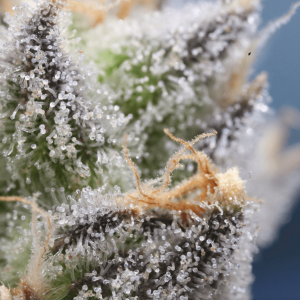
The Anatomy of Trichomes
Trichomes are tiny, hair-like structures found on the surface of cannabis plants that somewhat resemble a light dusting of frost.
Not only do they play a pivotal role in the plant’s survival, but trichomes are also responsible for a strain’s psychoactive and therapeutic properties.
Microscopic Structure and Appearance
On a microscopic level, trichomes appear as delicate, crystal-like appendages.
They consist of a stalk and a head, which houses a resin gland. This gland is responsible for the production of various cannabinoids, terpenes, and flavonoids, which contribute to the aroma, flavor, and effects of cannabis.
Identification of Trichomes
Identifying trichomes can be a bit challenging due to their minuscule size.
They are most often seen as a frosty, white coating on mature, cannabis flowers and buds. Under magnification, trichomes resemble mushroom-like structures and their color can vary from clear (immature cannabis flowers) to cloudy or amber hue (mature), which can be an indicator that the cannabis plant is ready for harvest.
How Trichomes Develop on Cannabis Plants
Trichome development begins as the cannabis plant enters its flowering stage. They start as tiny, clear cells on the surfaces of the leaves, stems, and buds of cannabis flowers. As the plant matures, these cells multiply and enlarge, forming a dense, sticky layer.
Note that various environmental factors, including light intensity, temperature, and humidity, can influence trichome development and the chemical composition of their secretions.
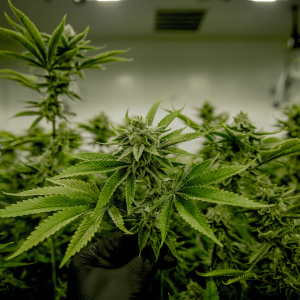
The Magical World of Cannabinoids and Terpenes
Cannabis plants are famous for their complex biochemical composition, boasting over 100 cannabinoids and a rich bouquet of terpenes. And crazy enough, all of these compounds reside predominantly in the marijuana plant’s many resinous glands and trichomes, contributing significantly to the cannabis plant’s unique characteristics.
The Biochemical Contents of Trichomes
Trichomes are small, hair-like, fine outgrowths on the cannabis plant that serves as the main production sites for most cannabinoids and terpenes.
These miniature factories are coated with a waxy cuticle layer, which creates a protective shield against potential threats. However, within their resinous interior, cannabis trichomes house a diverse range of active cannabinoids including THC and CBD, as well as various terpenes like myrcene, limonene, and pinene.
Role of Trichomes in Cannabinoid and Terpene Production
Trichomes play a pivotal role in the creation of cannabinoids and terpenes.
Through a series of complex enzymatic reactions, these miniature factories convert precursors into various cannabinoids and terpenes. The genetic makeup and environmental conditions of trichomes play a role in determining the unique combinations of compounds. That’s why we have such a wide variety of cannabis strains out there!
Significance of Different Cannabinoids and Terpenes
Each cannabinoid and terpene plays a unique role in shaping the cannabis experience. For cannabis medicine for instance, THC is renowned for its psychoactive effects, while CBD is praised for its potential therapeutic benefits.
Meanwhile, terpenes contribute to the strain’s distinct aroma and flavor profile, and may also interact with cannabinoids to enhance their effects – a phenomenon known as the entourage effect.
The fascinating interaction between cannabinoids and terpenes highlights the incredible complexity of the cannabis plant and its wide range of potential applications.
Trichomes and Cannabis Quality
Trichomes play a crucial role in determining the quality and potency of the cannabis plant.
These tiny structures are the plant species’ prime source of cannabinoids, including Tetrahydrocannabinol (THC) and cannabidiol (CBD), which largely contribute to the psychoactive and medicinal qualities of the plant. A higher concentration of trichomes often signifies a more potent product.
However, trichome development is influenced by several factors including light exposure, temperature, and nutrient availability. Precise control of these factors can optimize trichome production, but the art of harvesting also plays a huge role. Proper timing and method of harvest can help preserve trichomes and other cannabinoids, ensuring a high-quality, potent product.
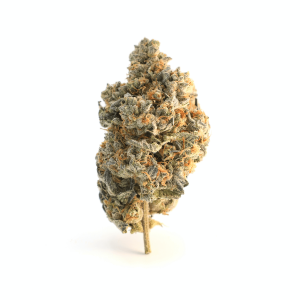
The Different Types of Trichomes
There are three types of cannabis trichomes, all of which differ in regard to their functions and characteristics. Let’s explore.
- Bulbous Trichomes: These are the smallest among the three trichomes, often invisible to the naked eye. Despite their minuscule size, bulbous trichomes have a significant role in the cannabis plant’s defense mechanism.
- Capitate-Sessile Trichomes: Slightly larger than their bulbous counterparts, capitate-sessile trichomes are more prevalent across the surface of cannabis plants. They have a more complex structure and contain a higher concentration of cannabinoids.
- Capitate-Stalked Trichomes: These are the largest and most abundant trichomes on mature cannabis plants. They are responsible for the majority of the plant’s cannabinoid and terpene production, which contributes to the unique aroma, flavor, and effects of different cannabis strains.
Each type of these tiny crystals serves a unique function. Bulbous trichomes serve as the plant’s primary line of defense, capitate-sessile, trichomes produce cannabinoids that contribute to the plant’s psychoactive properties, and capitate-stalked trichomes are the powerhouses that can produce higher concentrations of cannabinoids and other compounds.
These distinctive functions and characteristics of trichomes play a significant role in the plant’s survival as well as its medicinal and recreational uses.
Trichomes and Extraction Methods
A variety of trichome extraction methods exist, each with its unique benefits and drawbacks.
Some of the most popular techniques include CO2 extraction, which utilizes carbon dioxide under pressure to separate cannabinoids from plant matter, and ethanol extraction, where the plant matter is soaked in ethanol to separate the desired cannabis compounds out.
Another widely used method is solvent-less extraction, such as a rosin press, which uses heat and pressure to squeeze the compounds out of the plant, retaining the full spectrum of the plant’s beneficial compounds.
The products derived from marijuana plants using these extraction methods include oils, tinctures, edibles, and topicals. The concentrated nature of these cannabis extracts allows users to consume less product while achieving the same effect.
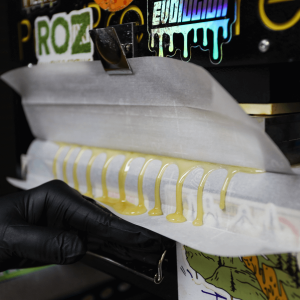
The Role of Trichomes in Breeding and Genetics
Trichomes play a big role in cannabis breeding. Breeders choose strains based on trichome concentration and composition, often aiming for high THC or CBD levels or a specific terpene profile.
The evolution of trichome-enhanced cannabis strains has some exciting potential. Breeders are always trying to create new strains that maximize the productivity and potency of these amazing microscopic factories.
As research continues, we could see trichome-enhanced cannabis strains with even higher levels of cannabinoids, terpenes, and other beneficial compounds.
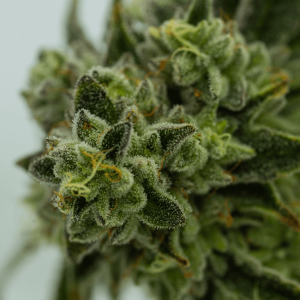
The Art of Trichome Inspection
Mastering the art of trichome inspection is essential for any cannabis enthusiast seeking the optimal harvest.
Trichomes serve as a reliable indicator of the plant’s maturity and potency. Both a magnifying glass and microscope can be instrumental tools in this process as they allow for detailed observation of trichome development.
As for identifying trichome maturity, clarity is key; clear trichomes indicate early stages, milky white trichomes may suggest peak THC levels, while amber trichomes show the onset of CBD production. Thus, harvest timing largely depends on the desired effects.
For example, if you’re pursuing a more euphoric, head-focused high, harvest when most trichomes are milky. However, if a full-bodied, relaxing effect is more your style, wait until a majority of the trichomes have turned amber.
The Impact of Trichomes on Your Cannabis Experience
Trichomes play a pivotal role in influencing your cannabis experience.
First and foremost, trichomes significantly impact the flavor and aroma of the cannabis strain. Rich in terpenes, these tiny appendages are responsible for producing the distinctive scent and taste profiles that differentiate one strain from another – from fruity and sweet to earthy and pungent.
Secondly, trichomes are crucial for the psychoactive effects of cannabis. They are the primary producers of cannabinoids like THC and CBD, the compounds responsible for the euphoric high and the therapeutic effects associated with cannabis.
Lastly, it’s essential to comprehend the ‘Entourage Effect’ – the synergistic interplay between cannabinoids and terpenes that enhances the overall effect of the marijuana plant. By understanding the role of the three trichomes together, one can truly appreciate the complexity and beauty of the cannabis plant and its many different effects.
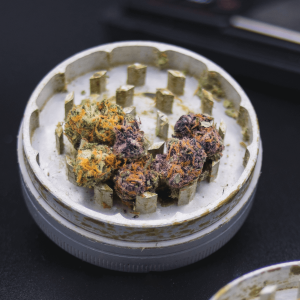
Conclusion
To wrap it up, trichomes are super important in the female cannabis flower and plant itself’s life cycle.
These small, crystal-like appendages act as a defense mechanism and a production hub for key compounds like cannabinoids, terpenes, and flavonoids, which are crucial for the plant’s survival and functioning.
And let’s not forget their mesmerizing beauty, giving us a glimpse into the intricate chemistry happening beneath the surface.
As we look ahead, diving deeper into cannabis research and genetics holds so much promise. Unraveling the mysteries of cannabis trichomes could help us maximize the medicinal benefits of cannabis, ushering in a new era of personalized and holistic medicine.
Frequently Asked Questions
1. What does it mean if your weed has crystals?
The presence of these tiny hairs or crystals anywhere on your cannabis, known as trichomes, signifies high potency. These tiny, hairlike structures produce and store the plant’s cannabinoids and terpenes, which are responsible for the strain’s therapeutic and psychoactive effects. A heavy trichome coating often indicates a higher concentration of THC, leading to a more intense high.
2. What are the white crystals on cannabis nugs?
The white, shiny crystals that you often see on the top female cannabis plants’ flower buds are known as trichomes. These tiny, hairlike structures serve a crucial role in the life cycle of the cannabis plant, producing the cannabinoids, terpenes, and flavonoids that contribute to the plant’s potency and unique aroma & flavors. Trichomes are a sign of a mature, healthy cannabis plant and are a key factor in determining the quality and potency of the bud.

 Rewards
Rewards





